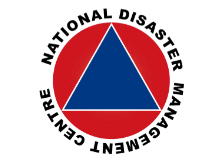Original Research
Understanding vulnerability and resilience in Somalia
Jàmbá: Journal of Disaster Risk Studies | Vol 12, No 1 | a856 |
DOI: https://doi.org/10.4102/jamba.v12i1.856
| © 2020 Charles Lwanga-Ntale, Boniface O. Owino
| This work is licensed under CC Attribution 4.0
Submitted: 21 June 2019 | Published: 14 December 2020
Submitted: 21 June 2019 | Published: 14 December 2020
About the author(s)
Charles Lwanga-Ntale, Research and Analysis Department, Development Initiatives, Nairobi, KenyaBoniface O. Owino, Research and Analysis Department, Development Initiatives, Nairobi,, Kenya
Abstract
In the recent years, Somalia witnessed a heightened frequency of droughts and conflicts. This article explores the experiences of Somalis during the 2011 and 2016 crises, examining the link between vulnerability and resilience, and the role played by international humanitarian responders in resilience building. The aim of this study is to provide information on how different population groups responded to and managed to survive recurrent shocks; the prevailing drivers of marginalisation and exclusion, and mechanisms through which these are maintained; and the role of external stakeholders. A review of literature was combined with field consultations in four study sites: Kismayo Urban, Kismayo Rural, Baidoa and Beledweyne, and complemented by consultations with the Somali diaspora community in Kampala, Uganda. Participatory research methods were used, including participant observation, focus group discussions, household dialogues, livelihood analysis, well-being analysis and gender analysis. The findings of the study revealed an inextricable link between vulnerability, conflict and disasters, with the major challenge facing the most vulnerable Somalis being uncertain about the future. Somali households adopted different coping strategies depending on their resource endowments, including the social and organisational coping strategies, divesting of non-essential domestic assets, and diversification of income generation and food production strategies. Thus, different population groups survived the shocks through social connectedness, which aligned with the effective use of remittances to create robust mechanisms for sharing risk. That notwithstanding, groups that had the backing of more powerful clans seemed to have the edge over those who did not.
Keywords
vulnerability; resilience; coping; marginalisation; Somalia
Metrics
Total abstract views: 3948Total article views: 3614
Crossref Citations
1. The utterly unforeseen livelihood shock:COVID‐19 and street vendor coping mechanisms in Hanoi, Chiang Mai and Luang Prabang
Sarah Turner, Jennifer C. Langill, Binh N. Nguyen
Singapore Journal of Tropical Geography vol: 42 issue: 3 first page: 484 year: 2021
doi: 10.1111/sjtg.12396

